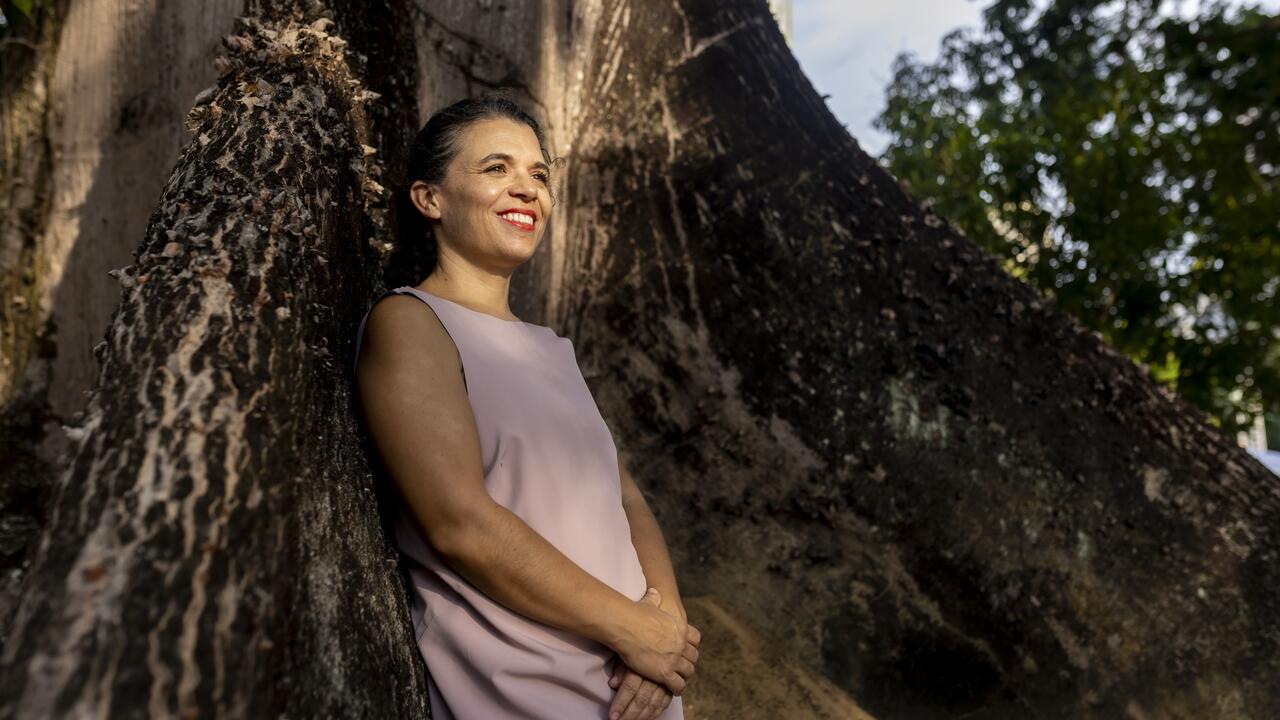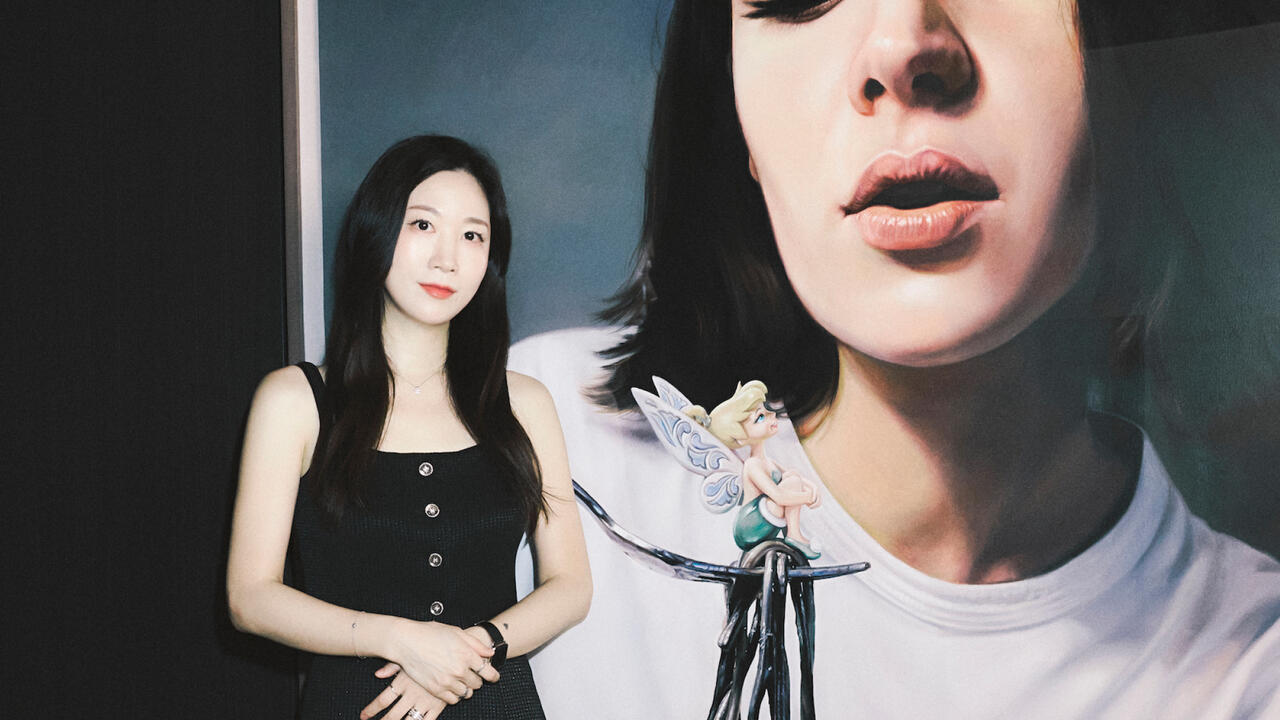The Museum Inside an Egg
The founders of Guatemala City’s NuMu, Stefan Benchoam and Jessica Kairé, discuss how their program extends far beyond its shell
The founders of Guatemala City’s NuMu, Stefan Benchoam and Jessica Kairé, discuss how their program extends far beyond its shell

Evan Moffitt: How did NuMu [Nuevo Museo de Arte Contemporáneo] come into being?
Stefan Benchoam: Ten years ago, there was no museum of contemporary art in Guatemala, just the National Museum of Modern Art.
Jessica Kairé: Which, with its chaotic bureaucracy and nepotistic programming, reflects the country’s political dysfunction. That’s why, when we decided to open our own contemporary art space, we did so with no financial support from the government.
SB: A big, white-cube space was impossible without funding, so we looked at other models, like Pablo Leon de la Barra’s White Cubicle Toilet Gallery in London. Then, in 2012, we were both invited to participate in Guatemala’s Paiz Biennial. We proposed NuMu as our project, but the curator didn’t understand the context. At the time, my gallery, Proyectos Ultravioleta, had just lost its space, so I was driving around Guatemala City looking at places to rent when I came across this iconic, egg-shaped structure – originally built as a fresh-egg stand – on one of the busiest streets in the city. There are four shelves and a little bench inside, which makes it challenging for exhibitions. I knew it wouldn’t work for Ultravioleta, but I spoke with Jessica that night and we decided it was perfect for NuMu.
JK: Paiz Biennial is poorly funded and we each received just US$500 in production costs. So, we decided to combine our resources to pay two months’ rent for the space and then produced work very cheaply for the biennial. We both made video works with our mobile devices, and I made some papier-mâché sculptures.
SB: We cannibalized the logo of New York’s Museum of Modern Art to make our branding look official and invited the artist Federico Herrero to do the inaugural exhibition. Half of the people who came to the opening didn’t even get out of their cars: they thought it was a prank!
JK: Given that the space is non-traditional, our programme was relatively institutional to start, informed by bigger contemporary art museums. We’d pair exhibitions with educational programming outside the space. So, in a way, we were following certain rules in order to break them.

EM: Does thinking of it as an artists’ project afford you greater flexibility?
SB: NuMu’s architecture offers us a certain flexibility. It’s not this daunting structure that makes you feel insignificant. Its small scale is relatable, even endearing. When you’re so small, you’re able to adapt quickly.
EM: In 2017, you transported NuMu on a flatbed truck to the Los Angeles County Museum of Art for the exhibition ‘A Universal History of Infamy’. What was it like moving the museum across international borders?
SB: We met the show’s curators, José Luis Blondet, Rita Gonzalez and Pilar Tompkins Rivas, on their first research trip to Guatemala. They initially considered inviting artists we’d worked with previously to participate in expanded versions of those shows, but we felt the scale of the space was important. Then, we realized that NuMu could travel. And we liked the idea that, instead of going to the museum, the museum would come to you.
JK: We thought crossing the US-Mexico border would be challenging but, actually, getting out of Guatemala was nearly impossible. NuMu was subject to the customs regulations of an ‘artistic masterpiece’.
SB: So, one of the agents suggested that we declare it as a giant dinosaur egg.
JK: If the museum hadn’t been shaped like an egg, I doubt we would have made it to Los Angeles!
EM: Did people interact with NuMu differently in Los Angeles?
JK: When you place something within an institutional context, people take it seriously. But you could see they also found it very entertaining, because it was so different. And the contrast in scales was huge: the concrete platform cast for the installation cost around US$5,000, more than six months of our programming.
EM: How has NuMu’s programme shifted in response to the COVID-19 lockdown?
SB: In early March, Philippe Hunziker – the owner of SOPHOS, Guatemala’s only serious bookstore and an oasis in a country with high illiteracy rates – approached us to rent NuMu as a place to safely distribute online orders. My partner, Salma Tuqan, suggested that we use this income to jointly commission short texts and poems by Guatemalan writers to be printed and given out with every order. Now people are collecting poetry from the same window that used to serve eggs!
This article first appeared in frieze issue 214 with the headline ‘Fresh Egg’.
Main image: Amalia Pica, ‘Portlligat’, 2015, NuMu, Guatemala City. Courtesy: the artist and NuMu
























